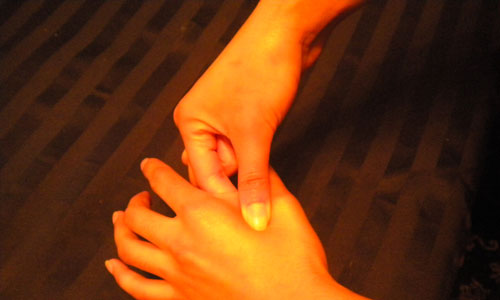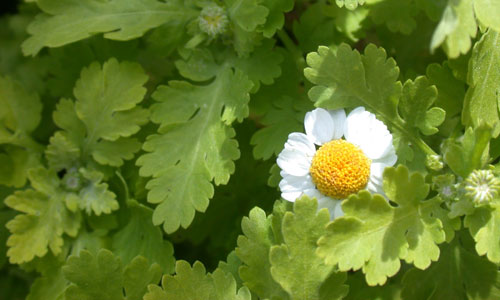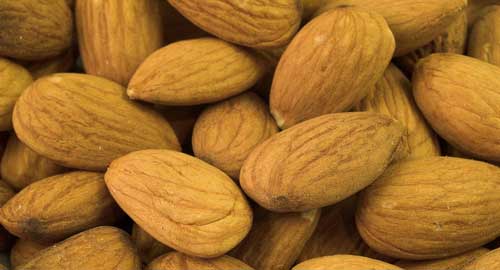Do you know what Jack of nursery rhyme fame did after he and Jill fell down the hill?
Up got Jack, and home did trot
As fast as he could caper
He went to bed and bound his head
With vinegar and brown paper.
One of the oldest headache remedies in the book, and still effective, is a handkerchief or kraft paper soaked in vinegar and bound around the head. It’s just one of many natural headache cures to try if you want to deal with the throbbing drug-free.
Acupressure
There are several acupressure techniques I use to combat headache pain, depending on the kind of headache and whether I’m at home or in public (you’ll see why in a moment).
1. The base of the skull and the hollow of the eyes. This one can be a bit tricky, but you’ll want to apply light to medium pressure to the indentation where the base of the skull meets the neck. Then, use the index finger and thumb to press between the sides of the nose and the tear ducts.
I usually have to hold these particular pressure points for three to five minutes to get full relief, but it starts feeling better right away.
2. The webbing between thumb and index finger. Start by applying light pressure to the webbing, then move in small circles throughout the area. I’ve actually used this for both headaches and toothaches, since the massage interrupts the pain receptors temporarily.
3. Pressing your thumb to the roof of your mouth. I wouldn’t want to be known as a thumb sucker in public, but when you’ve got a nasty headache, you do whatever it takes to get rid of it.
Press the thumb to the roof of the mouth lightly at first, then apply greater pressure as you’re able to withstand it. It should take about five minutes to achieve some relief, and may need to be repeated.
4. Massaging the temples and jaw. Start with the temples and lightly massage in a circular motion. While heavy pressure may feel good for a moment, it will almost always rebound into more pain, so be gentle. Then move down to the hinge of the jaw and do the same.
You may use diluted essential oil here if you choose. A list of the best essential oils for this can be found below.
Herbs

If you suffer from migraines, you know that the side effects of migraine meds can be just as awful as the migraines themselves. My doctor warned me that I’d feel shaky, nauseous, and generally worse for the 30-45 minutes before the medication kicked in. Nice, eh? While that’s pretty bad, it’s often the rebound headache that’s worse.
1. Enter feverfew. It’s probably the most effective herb for treating migraines. The best way to take it is eating one to three leaves fresh, but be forewarned…it’s pretty bitter. You can also take it in capsule form, though raw is definitely best. You can even grow your own!
Please note that feverfew is not recommended for pregnant or nursing mothers. Also, chewing the raw leaves frequently can cause mouth sores.
2. Another option is cayenne pepper mixed in water. Cayenne contains capsicum, which helps to dilate blood vessels. Since migraines are thought to be caused by constriction of blood vessels, anything that opens them up will help. Cayenne is potent, and it’s quick. I will also warn you, it burns like heck.
Dilute 1/4 tsp. cayenne in 4 oz warm water. Mix with a cotton swab, and apply to your nasal passages. Yes, it will hurt. Do NOT use this remedy if you have a sore inside your nose. Sit down and relax. You should notice the burning subside, and the headache with it.
3. Ginger tea or dried ginger. Along with being fantastic at taking care of tummy troubles, ginger can help with headaches. 500-600 mg of dried ginger taken when you recognize a headache coming on can ward it off. If you’re past that point, it’s probably better to make a ginger tea.
You can buy ginger tea at a natural foods store, or make your own. To make it at home, just grate or slice ginger root into water that has been brought to boiling. Turn the water off, and allow the tea to steep for 15-20 minutes. You can drink it plain or with lemon.
Aromatherapy
Migraine Facts
- The headaches that accompany migraines are vascular headaches caused by expansion of the blood
vessels in the brain. - Migraines are more than twice as common in females than they are in males.
“They” Said
- Acupressure Techniques for Headaches
- Headache Home Remedies
- 10 Quick Headache Cures
1. Probably the most well known essential oil for headache help is peppermint, and for good reason. It’s cooling, the smell is soothing to the senses, and it’s well known to us, making it comfortable to use.
Peppermint oil may be used in several ways for headache relief. You can mix equal parts peppermint and EVOO or coconut oil and massage into the temples, jaw and back of the neck. Allow it to absorb fully instead of wiping it away.
Another option is to boil a small pot of water and add 8-10 drops of oil. Turn off the stove, drape a towel over your head and neck, and inhale deeply for ten minutes. This works quite well for sinus headaches.
There are also peppermint tea, and peppermint essential oil baths. For the bath, use 10-15 drops of oil in warm water, inhale and relax!
2. Basil oil is a bit more difficult to find in my area, but it can be inhaled the same way you would use peppermint oil.
3. Chamomile, lavender and lemongrass oils are fantastic for rubbing on the temples. Just dilute in EVOO or coconut oil and allow to soak in after you gently massage.
4. For baths only, a couple of drops of rose essential oil in a bath is wonderful and quite enough. Because this oil is particularly strong, you won’t want to use too much—unless of course, you want to smell like your grandmother’s lingerie drawer.
Headache Prevention

Of course the best way to help a headache is to never get one in the first place! Here are a few good preventatives:
1. Almonds and strawberries contain salicylates, which is the active ingredient in aspirin. If you eat a handful of either (or both) each day, they can help head a headache off at the pass.
2. Take note of the tension you experience in your brow and jaw, as well as in your neck and shoulders. Tension headaches often start here!
3. Eye strain from staring at screens all day long can cause headaches. Be sure to take adequate breaks when you need to spend large amounts of time working on a computer.
4. Regular exercise can help relieve tension and get the blood flowing, which may help prevent both tension headaches and migraines. Work up a sweat, and don’t sweat getting a headache! Give these remedies a try before you reach for the hard stuff!